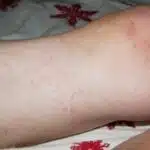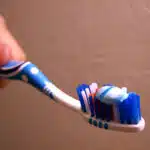As a sunscreen stain removal expert, I have witnessed the frustration experienced by many individuals who struggle with removing stubborn sunscreen stains from their clothes. Sunscreen products are essential for protecting the skin from harmful UV rays and preventing skin damage, but they can leave unsightly and difficult-to-remove stains on clothing.
Removing sunscreen stains requires a combination of knowledge about the type of fabric, the nature of the stain, and effective stain removal techniques. In this article, I will provide useful tips and tricks for removing sunscreen stains from various fabrics such as cotton, polyester, nylon, and spandex. Whether you’re dealing with fresh or set-in sunscreen stains, these methods will help you restore your clothes to their original look without leaving any trace of residue or discoloration.
Understanding Sunscreen Stains
Like a stubborn ink stain, sunscreen can be a nuisance to remove from clothing. Sunscreen stains are caused by the combination of active ingredients in sunscreens, such as avobenzone and oxybenzone, and natural body oils that seep into fabrics. These stains are difficult to remove because they contain both oil and dye components. The oil component penetrates deep into the fabric fibers while the dye component adheres to the surface, making it challenging to eliminate.
Prevention is key when it comes to dealing with sunscreen stains. One way to avoid these stains is by applying sunscreen at least 30 minutes before getting dressed. This allows ample time for the product to absorb and dry before coming into contact with fabrics. Another prevention tip is to choose sunscreens that are water-based instead of oil-based. Water-based products have less oil content, making them less likely to leave oily residue on clothes.
Identifying the type of fabric is crucial when removing sunscreen stains. Different fabrics require different treatments, so it’s important to check the care label before attempting any removal methods. Some types of fabric may need special attention or professional cleaning services because they are delicate or prone to shrinkage. By correctly identifying the type of fabric, you can avoid causing further damage during the stain removal process.
Identifying The Type Of Fabric
- Cotton is a natural fabric that is highly absorbent and relatively easy to clean.
- Linen is lightweight and breathable, but also prone to wrinkling and shrinking when washed.
- Synthetic fabrics are generally resistant to staining, but may require special cleaning solutions to remove sunscreen stains.
- Wool is a delicate fabric that is prone to shrinking when washed and may require special treatment to remove sunscreen stains.
- Leather is a tough, durable fabric that is best cleaned with a dry cloth or special leather cleaner.
- Denim is a sturdy fabric that can usually be cleaned with a mild detergent or special stain remover.
Cotton
As a sunscreen stain removal expert, I understand the frustration of having sunscreen stains on your cotton clothes. Removing sunscreen stains from cotton can be tricky, but with the right tips and tricks, it is possible to restore your clothes to their original state.
One DIY method to get rid of sunscreen stains from cotton clothes is to mix one part white vinegar with two parts water and apply the solution to the stained area. Let it sit for 30 minutes before washing the garment as usual. Another effective method is using baking soda by making a paste with water and applying it to the stain for at least 15 minutes before washing.
It’s important to remember that when dealing with sunscreen stains on cotton, you should avoid using hot water or a dryer as this will set the stain permanently. Instead, wash in cold water and air dry until you are sure that the stain has been removed completely. By following these simple steps, you can effectively remove sunscreen stains from your cotton clothes without damaging them in any way.
Linen
As a sunscreen stain removal expert, it’s important to identify the type of fabric before attempting any cleaning or stain removal process. In this subtopic, we will discuss the best ways to remove sunscreen stains from linen, a fabric that is known for its durability and breathability. Linen is a popular choice for summer clothing due to its lightweight and comfortable nature. However, like any other fabric, it is susceptible to staining. In this section, we’ll explore some tips and tricks on how to effectively remove sunscreen stains from linen.
Linen care and maintenance are crucial in avoiding and treating stains. When dealing with sunscreen stains on linen clothes, prompt action is necessary. The longer you wait to address the stain, the harder it becomes to remove it completely. One effective method for removing sunscreen stains from linen is using dishwashing liquid. Mix one teaspoon of dishwashing liquid with two cups of cold water and apply the solution directly onto the stained area. Gently rub the solution into the fabric using your fingers or a soft-bristled brush before rinsing thoroughly with cold water.
Another method for removing sunscreen stains from linen is by using baking soda and vinegar solution. Mix equal parts baking soda and white vinegar to form a paste-like consistency then apply it directly onto the stained area. Let it sit for at least 30 minutes before washing as usual in cold water. As with any stain removal process, avoid using hot water or drying in high heat as this may set the stain permanently.
In conclusion, removing sunscreen stains from linen requires immediate attention and proper care. By following these tips and tricks, you can effectively remove stubborn sunscreen stains without damaging your linen clothes. Remember always to wash in cold water and air dry until you are sure that the stain has been completely removed.
Synthetic Fabrics
As a sunscreen stain removal expert, it’s crucial to identify the type of fabric before attempting any cleaning or stain removal process. Synthetic fabrics are becoming increasingly popular due to their affordability and durability. These fabrics are made from artificial fibers such as polyester and nylon, which have unique properties that make them ideal for various applications. Synthetic fabrics have advantages over natural fibers such as cotton and wool, including being more resistant to wrinkles and shrinking. They also tend to dry faster than natural fibers, making them a favorite choice for outdoor clothing.
However, synthetic fabrics have some disadvantages that should be taken into account when considering their care and maintenance. One disadvantage is that they are not as breathable as natural fibers, which can lead to discomfort in hot weather. Another downside is that synthetic fabrics tend to retain odor more than natural fibers, particularly when exposed to sweat or other liquids. Additionally, synthetic fabrics can be prone to pilling or shedding over time if not cared for properly.
When dealing with sunscreen stains on synthetic fabrics like polyester or nylon, it’s important to take immediate action. One effective method for removing sunscreen stains from these types of fabrics is using rubbing alcohol or white vinegar solution. Mix equal parts rubbing alcohol or white vinegar with cold water then apply the solution directly onto the stained area using a clean cloth or sponge. Gently rub the solution into the fabric before rinsing thoroughly with cold water and air drying until you are sure that the stain has been completely removed.
By knowing how to identify different types of fabric and understanding their advantages and disadvantages in terms of care and maintenance, you can effectively remove sunscreen stains without damaging your clothes. Whether you’re dealing with linen or synthetic fabrics, prompt action and proper care will help ensure that your clothes look great all summer long.
Checking For Any Special Care Instructions
After identifying the type of fabric, the next critical step in removing sunscreen stains is to check for any special care instructions. Some fabrics are highly sensitive and can easily be damaged by certain cleaning agents. Therefore, it is essential to read the care label and follow the instructions provided. Apart from checking the label, researching materials online can also provide valuable insights into how best to clean a particular fabric.
In some instances, seeking professional advice may be necessary when dealing with stubborn sunscreen stains. Professional cleaners have vast experience in handling different types of fabrics and can offer valuable tips on how to remove various stains without damaging the material. They also have access to specialized equipment that makes stain removal more efficient.
Pre-treating the stain is crucial in ensuring that it does not become permanent on your fabric. In most cases, pre-treating involves gently rubbing a mild detergent or dish soap into the affected area before washing it off with cold water. However, it is essential to test the cleaning agent on a small inconspicuous area before applying it to the entire stained area to ensure that it does not cause discoloration or damage to your fabric. By pre-treating your stain, you increase your chances of completely removing it during regular laundering.
Pre-Treating The Stain
- Soaking the fabric in warm water is the first step to removing a sunscreen stain.
- After soaking, gently scrub the stain with a mild detergent solution.
- When scrubbing the stain, use a soft-bristled brush to avoid causing any damage to the fabric.
- Applying a specialised detergent specifically designed for stain removal is an effective way to remove sunscreen stains.
- The detergent should be applied in an even layer and left to sit for the recommended amount of time.
- After the detergent has been applied, rinse the fabric thoroughly and check for any remaining stains.
Soak The Fabric
As a sunscreen stain removal expert, I highly recommend pre-treating the stain by soaking the fabric. Soaking is an effective way to loosen and remove the stain from the fabric. The benefits of soaking are numerous, including its ability to penetrate deep into the fibers of the fabric and break down the oil-based ingredients in sunscreen.
There are alternative soaking methods that you can use depending on your preferences and availability of resources. For instance, you can use natural home remedies such as white vinegar or baking soda mixed with water instead of commercial stain removers. These alternatives are not only cost-effective but also eco-friendly, making them ideal for those who prioritize sustainability.
In conclusion, soaking is a vital step in pre-treating sunscreen stains on fabrics. It offers several benefits and there are various alternative soaking methods available for those who prefer natural remedies. By following these tips, you can effectively remove sunscreen stains from your clothes and keep them looking new for longer.
Scrub The Stain
Transitioning from soaking, the next step in pre-treating sunscreen stains is to scrub the stain. Scrubbing helps to further loosen and lift the stain from the fabric, making it easier to remove during the washing process. To begin, choose appropriate scrubbing tools such as a soft-bristled brush or a toothbrush. These tools are gentle enough not to damage delicate fabrics but tough enough to effectively scrub away the stubborn sunblock stains.
When scrubbing, it’s essential to use effective techniques that will not only remove the stain but also prevent further damage to the fabric. One technique is to apply a small amount of detergent or stain remover directly onto the affected area before scrubbing gently in circular motions. Another technique is to mix baking soda with water and make a paste that can be applied directly onto the stain before using a brush or toothbrush for scrubbing.
It’s crucial to note that excessive scrubbing can cause fabric damage, especially on delicate materials such as silk or wool. Therefore, it’s essential always to test an inconspicuous area of the garment before proceeding with any scrubbing technique. Overall, by following these tips on choosing appropriate scrubbing tools and effective techniques, you can successfully pre-treat sunscreen stains on your clothes and keep them looking their best.
Apply Detergent
After scrubbing the sunscreen stain, the next step in pre-treating is to apply detergent or stain remover. Effective detergents can help further loosen and lift the stain from the fabric, making it easier to remove during washing. It’s crucial to choose a detergent that is appropriate for the type of fabric, as using harsh chemicals can cause damage.
When applying detergent or stain remover, it’s essential to follow the instructions on the product label carefully. This will ensure that you’re using it correctly and not causing any harm to your clothes. Additionally, natural alternatives such as vinegar, lemon juice, or baking soda can be used instead of harsh chemicals. These methods are effective and safe for most fabrics.
It’s important to note that some stains may require multiple applications of detergent or stain remover before they’re fully removed. However, excessive use of these products can cause damage to delicate fabrics like silk or wool. Therefore, always test an inconspicuous area of the garment before proceeding with any application method. With these tips in mind, you can effectively pre-treat sunscreen stains on your clothes and keep them looking their best without causing any damage.
Using Dish Soap
To remove sunscreen stains, dish soap is a common household item that can be used effectively. By following the steps outlined below, you can successfully eliminate those pesky stains and restore your clothes to their original state.
Firstly, dampen the stained area of the garment with cold water. Then, apply a small amount of dish soap directly onto the affected area. Rub the soap into the stain gently with your fingers or a soft-bristled brush. Allow it to sit on the stain for 5-10 minutes before rinsing with cold water.
Alternative methods for removing sunscreen stains include using vinegar or baking soda. Vinegar is effective at breaking down oily substances and can be used in place of dish soap. For tougher stains, baking soda can be added to the dish soap mixture for an extra boost of cleaning power. However, it’s important to note that while these methods may work for some stains, they may not be as effective as dish soap in all cases.
In comparing effectiveness between alternative methods and dish soap, we have found that using dish soap is typically more successful at removing sunscreen stains. While vinegar and baking soda are both great natural cleaners, they may not have the same ability to break down oily substances like dish soap does. However, it’s always worth trying multiple methods to see which works best for your specific stain.
Applying Baking Soda
Baking soda is a versatile substance that can be used for a variety of cleaning purposes, including removing sunscreen stains from clothing. The benefits of using baking soda in laundry are numerous, as it helps to brighten and whiten fabrics, remove odors, and improve the effectiveness of detergent. When combined with other cleaning agents, such as vinegar or hydrogen peroxide, baking soda can be even more effective at removing tough stains like sunscreen.
Aside from its use in laundry, baking soda has many alternative uses in cleaning. It can be used to clean surfaces like countertops and sinks, deodorize carpets and upholstery, and even unclog drains. Baking soda is also gentle enough to use on delicate fabrics like silk or wool, making it a great all-purpose cleaner to have on hand.
When it comes to removing sunscreen stains specifically, baking soda can be a powerful tool in your arsenal. To use baking soda for this purpose, simply mix it with water to create a paste and apply it directly to the stained area. Rub the paste into the fabric gently with your fingers or a soft-bristled brush before washing the garment as usual. With consistent use of baking soda as a stain remover, you’ll find that not only do your clothes come out looking cleaner and brighter but that you’ve saved money by avoiding costly dry-cleaning bills.
Transition: While baking soda is an effective method for removing sunscreen stains from clothing, sometimes you need something stronger. That’s where rubbing alcohol comes in handy – read on to learn how to use it for this purpose!
Using Rubbing Alcohol
- Begin by preparing the area for the application of rubbing alcohol by ensuring that the surface is clean and free from residue.
- Once the area is prepped, apply a small amount of rubbing alcohol to the stain using a cotton ball and gently rub in a circular motion.
- Let the rubbing alcohol sit on the stain for a few minutes in order to break down the bonds of the sunscreen.
- Afterwards, use a clean cloth to blot the area and remove any excess rubbing alcohol.
- Continue to rub the stain in a circular motion with a damp cloth to help release the sunscreen stain.
- Once the stain is removed, rinse the area with water and blot dry with a clean cloth.
Prepare The Area
Before attempting to remove sunscreen stains with rubbing alcohol, it is important to prepare the area properly. This includes gathering all necessary cleaning tools, such as a clean cloth, rubbing alcohol, and a bowl of warm water. It is also recommended to wear gloves as a precautionary measure, especially if you have sensitive skin or are prone to allergic reactions.
Next, it is essential to test the rubbing alcohol on an inconspicuous area of the fabric before applying it directly onto the sunscreen stain. This will help determine if the fabric can withstand the alcohol without causing any damage or discoloration. If there are no adverse effects, apply rubbing alcohol onto the stained area and let it sit for a few minutes.
Once the rubbing alcohol has soaked into the stain, use a clean cloth dipped in warm water to gently blot away any excess liquid and residue. Repeat this process until the stain is completely removed. Remember to always read and follow all instructions on your cleaning products carefully and take necessary precautionary measures when handling them. By following these steps, you can effectively remove sunscreen stains from your clothing without damaging them in the process.
Apply Rubbing Alcohol
When it comes to removing sunscreen stains from clothing, using rubbing alcohol can be an effective solution. However, it is important to follow certain dos and don’ts to ensure that the process is carried out safely and efficiently.
Dos include testing the rubbing alcohol on an inconspicuous area of the fabric before applying it directly onto the stain. This will help you determine if the fabric can withstand the alcohol without causing any damage or discoloration. If there are no adverse effects, apply rubbing alcohol onto the stained area and let it sit for a few minutes before blotting away excess liquid and residue with warm water.
Don’ts include using too much rubbing alcohol or scrubbing aggressively as this could damage the fabric. It is also important to wear gloves when handling cleaning products such as rubbing alcohol, especially if you have sensitive skin or are prone to allergic reactions. If you prefer not to use rubbing alcohol, there are alternative solutions such as vinegar or baking soda that can also effectively remove sunscreen stains from clothing.
By following these guidelines, you can successfully remove sunscreen stains from your clothing without causing any damage in the process. Always remember to read and follow all instructions on your cleaning products carefully and take necessary precautionary measures when handling them. With a little bit of care and attention, you can keep your clothes looking clean and fresh all summer long!
Remove The Stain
As a sunscreen stain removal expert, it is important to understand how to effectively remove stains caused by sunscreens. However, before diving into the removal process, it is crucial to first understand the importance of choosing the right sunscreen formulation and understanding SPF ratings. This will help you select a product that not only provides adequate sun protection but also minimizes the risk of staining your clothing.
Once you have selected the appropriate sunscreen product and applied it correctly, it is possible that some of it may transfer onto your clothing. In such cases, using rubbing alcohol can be an effective solution for removing these stubborn stains. It is important to follow dos and don’ts when using rubbing alcohol such as testing it on an inconspicuous area of the fabric before applying it directly onto the stain and avoiding using too much or scrubbing aggressively.
When attempting to remove sunscreen stains with rubbing alcohol, it is important to understand how to properly remove the stain without causing any damage. By following these guidelines and being mindful of other alternative solutions such as vinegar or baking soda, you can successfully remove any trace of sunscreen from your clothing without negatively impacting its quality or condition. Remembering these tips will ensure that you are able to keep your clothes looking fresh and clean all summer long!
Applying White Vinegar
While there are many methods to remove sunscreen stains from clothing or fabric, some people may be hesitant to try using white vinegar. However, white vinegar is a powerful cleaning agent that can effectively remove stubborn stains, including those caused by sunscreen. Despite its strong smell and acidic properties, white vinegar is safe and non-toxic when used properly.
Here are some benefits of using white vinegar for removing sunscreen stains:
Affordable: White vinegar is an inexpensive alternative to expensive stain removers and detergents.
Natural: Vinegar is a natural product that does not contain harsh chemicals or synthetic fragrances.
Multi-purpose: Besides removing stains, vinegar can also be used for various cleaning tasks around the house.
Easy to use: Using white vinegar for cleaning is easy and requires minimal effort.
To remove sunscreen stains with white vinegar, simply follow these DIY cleaning steps:
- Mix equal parts of distilled water and white vinegar in a spray bottle.
- Spray the solution directly onto the stained area and let it sit for 10 minutes.
- Use a clean cloth to blot the stain until it fades away.
- Rinse the fabric with cold water and wash it as usual.
Using hydrogen peroxide is another effective method for removing sunscreen stains from clothing or fabric. Here’s how you can do it at home.
Using Hydrogen Peroxide
Using Hydrogen Peroxide: Pros and Cons
Hydrogen peroxide is a popular choice for removing sunscreen stains from clothes due to its effectiveness. It can break down the chemical components of the sunscreen, making it easier to remove. The process of using hydrogen peroxide on sunscreen stains is relatively simple. However, it is essential to follow certain precautions before applying it.
Pros of Using Hydrogen Peroxide:
- Effective in removing tough stains
- Easily available in most households and stores
- Affordable and cost-effective compared to other stain removal methods
- Safe for use on most fabrics
Cons of Using Hydrogen Peroxide:
- Can cause discoloration or bleaching on colored fabrics if not used correctly
- May weaken fabric fibers over time with repeated use
- Can cause skin irritation if it comes into contact with the skin
It is important to note that while hydrogen peroxide is an effective solution for removing sunscreen stains, there are alternative methods available as well. Some of these include using vinegar, baking soda, or lemon juice. These methods may work better for certain types of fabrics or stains.
Overall, hydrogen peroxide can be an effective solution for removing stubborn sunscreen stains from clothes. However, one must be cautious when using it and follow the instructions carefully. As with any stain removal method, it is always a good idea to test a small area first before applying it to the entire stain. In the next section, we will discuss an alternative method for removing sunscreen stains – trying lemon juice.
Trying Lemon Juice
- Lemon juice is a natural and cost-effective way to remove sunscreen stains from clothing and fabrics.
- It is important to note that lemon juice should be used as a pre-treatment before laundering in order to achieve the best results.
- When applying lemon juice to sunscreen stains, it is recommended to saturate the fabric with the juice and allow it to sit for fifteen minutes before laundering.
- The benefit of using lemon juice for sunscreen stain removal is that it helps to preserve the longevity of the fabric and also helps to remove odors associated with the stain.
Benefits Of Lemon Juice
As a sunscreen stain removal expert, I have encountered numerous clients who struggle with removing stubborn sunscreen stains from their clothes. While there are several commercial products available in the market, natural alternatives such as lemon juice are becoming increasingly popular due to their effectiveness and skin benefits.
One of the primary benefits of lemon juice is its natural bleaching properties. When applied to clothing, it can help lighten and remove stubborn stains caused by sunscreen. Additionally, the citric acid present in lemon juice acts as a natural exfoliant for the skin, helping to remove dead skin cells and brighten up your complexion.
Apart from its stain-removing abilities, lemon juice also offers several other skin benefits. It contains high levels of vitamin C, which helps stimulate collagen production and improve skin elasticity. Moreover, it has antibacterial properties that can help fight acne-causing bacteria and reduce inflammation on the skin.
In conclusion, if you’re struggling with sunscreen stains or looking for a natural way to improve your skin health, consider trying lemon juice. Its natural bleaching properties and skin benefits make it an effective solution for both your laundry and skincare needs. So go ahead and give this natural alternative a try!
Steps For Applying Lemon Juice
As a sunscreen stain removal expert, I often recommend alternative remedies to help my clients remove tough stains from their clothes. Lemon juice is one of the most effective natural solutions for removing stubborn sunscreen stains. Not only does it have powerful bleaching properties, but it also boasts numerous benefits for the skin.
If you’re interested in trying lemon juice to remove sunscreen stains, there are a few steps that you should follow. First, mix equal parts lemon juice and water in a spray bottle. Next, spray the solution onto the stained area of your clothing and let it sit for 10-15 minutes. Finally, rinse the clothing with cold water and repeat the process if necessary.
In addition to its stain-removing abilities, lemon juice offers several benefits for the skin. It contains high levels of vitamin C which can help improve skin elasticity and stimulate collagen production. Furthermore, its antibacterial properties can help fight acne-causing bacteria and reduce inflammation on the skin. By using these steps for applying lemon juice, not only will you be able to effectively remove stubborn sunscreen stains from your clothes but also reap its many skincare benefits.
Using Stain Remover Products
Stain remover effectiveness is a crucial aspect to consider when removing sunscreen stains. It’s essential to choose a trusted brand that’s proven to work effectively and efficiently. When shopping for stain removers, it’s necessary to read the labels carefully and follow the instructions provided on the packaging. An effective stain remover should be able to break down the oils in the sunscreen and lift them from the fabric.
If you prefer natural stain remover alternatives, there are plenty of options available that can be just as effective as chemical-based products. For example, lemon juice is an excellent natural stain remover that works well on many types of fabrics. Simply apply some lemon juice directly onto the stained area and let it sit for a few minutes before washing it off with cold water. Another natural alternative is baking soda, which can be mixed with water to create a paste that’s gently rubbed onto the affected area.
In summary, finding an effective stain remover is crucial for removing sunscreen stains from fabric. Whether using chemical or natural-based products, always read labels and follow instructions carefully for best results. In the next section, we’ll discuss how to wash the fabric properly after treating it with a stain remover.
Washing The Fabric
As the old adage goes, prevention is better than cure. However, when it comes to sunscreen stains, prevention may not always be possible. That’s why knowing how to remove these stains from fabric is essential. After carefully selecting the right stain remover and applying it to the affected area, washing the fabric is the next step in ensuring that your clothes come out looking as good as new.
Choosing detergents can be a daunting task for some people, but it doesn’t have to be. For sunscreen-stained clothing, it’s best to choose a detergent that contains enzymes. Enzymes are proteins that break down organic matter such as sunscreen, making them an effective ingredient in removing these types of stains. Be sure to read and follow the instructions on the detergent label, including any special washing instructions for delicate fabrics.
When washing fabric with sunscreen stains, it’s important to consider drying techniques. Avoid using high heat settings on your dryer as this can set any remaining stain into the fabric permanently. Instead, opt for air-drying your clothing on a flat surface or hanging them outside on a clothesline if possible. If you must use a dryer, select a low heat setting and remove the clothing promptly once they’re dry. With careful consideration of your detergent choice and drying technique, you can rest assured that your clothing will come out looking clean and fresh after removing those pesky sunscreen stains.
Transitioning into the subsequent section about ‘drying the fabric’, it’s important to note that proper drying techniques can make all the difference in ensuring complete removal of sunscreen stains from fabrics.
Drying The Fabric
After washing your clothing item, it is important to properly dry it to prevent any further damage. Avoiding shrinkage should be a top priority when drying the fabric. To do this, it is recommended to air dry your clothing item instead of using a dryer. If you must use a dryer, set it on the lowest heat setting and remove the clothing item as soon as it is dry.
Choosing the right fabric for your clothing item can also impact how you dry it. Delicate fabrics such as silk or lace should not be exposed to high heat and should be air-dried. On the other hand, cotton and polyester fabrics are more durable and can withstand higher heat settings in the dryer.
At this point, your clothing item should be free of any sunscreen stains and ready to wear. However, before doing so, it is important to check for any residue that may still be present on the fabric. This residue can cause skin irritation or even damage to the fabric over time. It is recommended to thoroughly inspect the fabric before wearing or storing it away.
Transitioning into checking for residue, it is important to take note of any areas where sunscreen was heavily applied, such as collars or sleeves. These areas may need extra attention when checking for residue.
Checking For Residue
- Checking clothing for sunscreen residue is important for ensuring fabric is not damaged.
- Properly inspecting the fabric for any discoloration or residue left behind is necessary.
- Checking skin for sunscreen residue is also important, as it can indicate whether sunscreen was applied properly and evenly.
- Visually inspecting the skin can help identify any missed spots and ensure that the sunscreen was applied correctly.
Checking Clothing
When it comes to sunscreen stain prevention, checking clothing is an essential part of the process. Before washing your clothes, it’s crucial to examine them carefully for any residue left behind by your sunscreen. This can include white or yellowish marks, oily spots, or even a strong odor that lingers on the fabric.
One of the best clothing stain removal tips is to tackle sunscreen stains as soon as possible. If you notice any marks on your clothes, try to rinse them off with cold water immediately. This can help loosen up the residue and prevent it from setting into the fabric. Once you’ve rinsed the area thoroughly, you can pretreat it with a stain remover and then wash your clothes as usual.
If you’re dealing with particularly stubborn sunscreen stains, you may need to take extra measures to remove them completely. In this case, it’s recommended to use a specialized detergent that’s designed specifically for removing tough stains. You can also try using vinegar or baking soda as natural alternatives for breaking down the residue. With these clothing stain removal tips in mind, you’ll be able to keep your wardrobe looking fresh and clean all summer long!
Checking Skin
As a sunscreen stain removal expert, examining symptoms is crucial in preventing stains caused by sunscreen. While it’s important to check your clothing for residue, it’s equally vital to examine your skin as well. Sunscreen residue left on the skin can not only cause stains on clothing but can also lead to skin irritation and breakouts.
To prevent this, make sure to thoroughly rub in your sunscreen and give it enough time to absorb before getting dressed. If you notice any white or yellowish marks on your skin after application, try wiping them off with a damp cloth or towel. Additionally, if you have particularly oily skin, consider using a mattifying primer before applying sunscreen to prevent excess oil from transferring onto your clothes.
In conclusion, checking for residue doesn’t just mean examining clothing but also taking preventive measures when it comes to the skin. By being mindful of these tips and tricks, you can enjoy the benefits of sunscreen without worrying about unsightly stains or irritated skin.
Preventing Future Sunscreen Stains
After checking for residue, the next step is to prevent future sunscreen stains. As a sunscreen stain removal expert, I have seen many cases where individuals struggle with removing stubborn stains. To avoid such situations, it is essential to be cautious while applying sunscreen to reduce the likelihood of leaving behind residue that could cause stains.
Here are some tips for effective sunscreen application:
- Apply your sunscreen before putting on clothes to avoid staining them.
- Allow enough time for the sunscreen to dry before coming into contact with any fabric.
- Rub the sunscreen thoroughly into your skin to avoid excess residue.
- Use mineral-based sunscreens instead of chemical-based ones as they are less likely to leave stains.
Additionally, if you are prone to getting sunscreen stains on your clothes, consider using alternative fabrics that do not stain easily or using different types of sunscreens that do not leave behind residues that could cause tough stains.
In conclusion, taking preventative measures is crucial in avoiding future sunscreen stains. By following these tips and being mindful during application, you can enjoy the benefits of sun protection without worrying about unwanted marks on your clothes. Remember to use appropriate fabrics and sunscreens to minimize the risk of stubborn stains.
Conclusion
Understanding how to remove sunscreen stains is essential for anyone who wants to keep their clothes and other fabrics looking new. Sunscreen stains can be stubborn, but with the right strategy, you can get rid of them quickly and easily. The first step is identifying the type of fabric you are dealing with; this will help you determine which cleaning method works best.
Once you have identified the fabric, check for any special care instructions. Some materials require delicate handling, and using the wrong cleaning product or technique could cause damage. Pre-treating the stain with dish soap is a highly effective method for removing sunscreen stains. After pre-treating, wash the fabric according to the care instructions provided and dry it thoroughly. Finally, check for any residue and repeat the process if necessary.
In conclusion, while removing sunscreen stains might seem like a daunting task, following these steps will make it easier than ever before. Remember that prevention is always better than cure; wearing protective clothing or applying sunscreen carefully can reduce the likelihood of staining your clothes or other fabrics in the first place. As they say, an ounce of prevention is worth a pound of cure!
Image Credits
- “Lick My Cream” by Taekwonweirdo (featured)





























